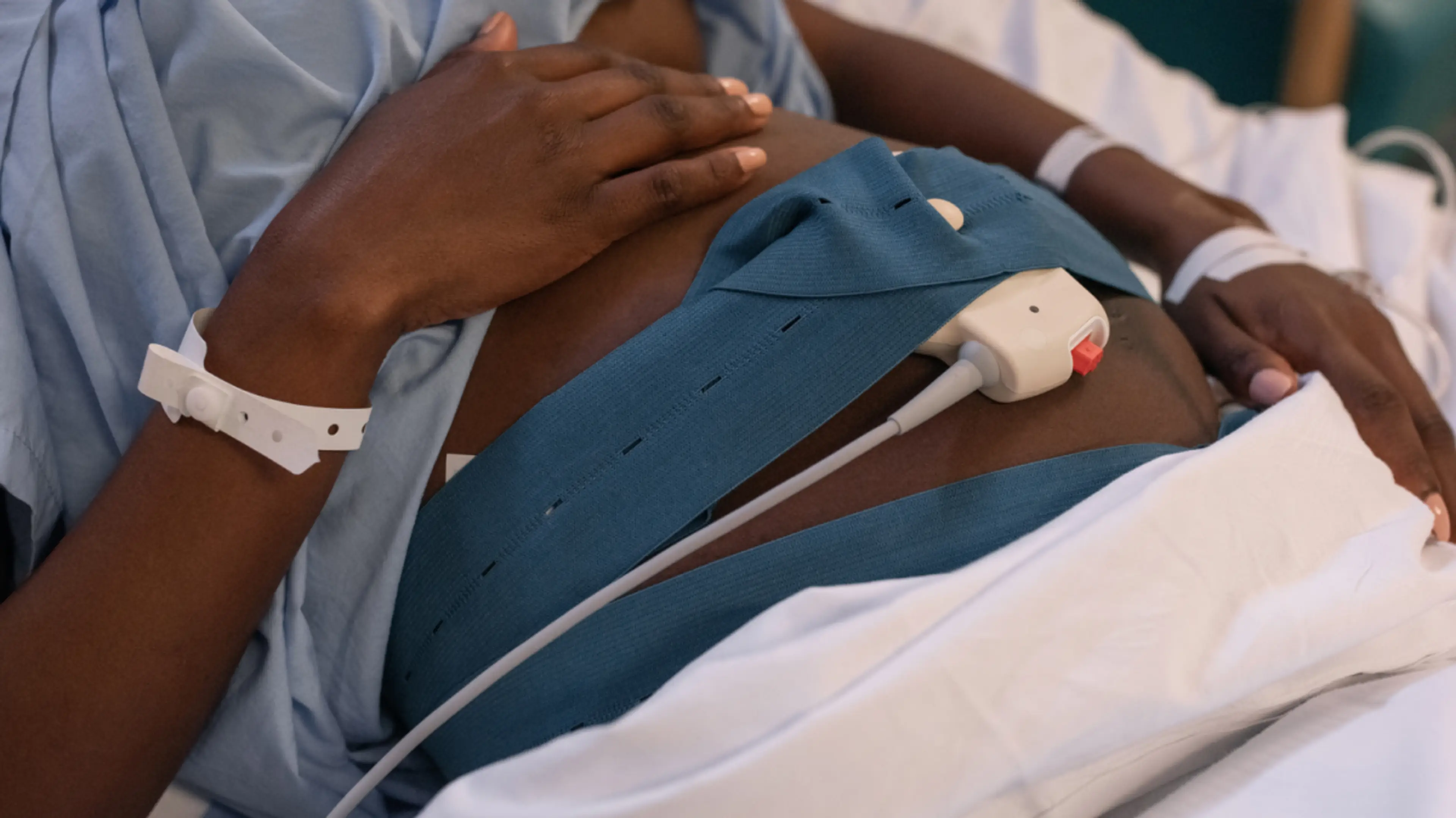If you’re planning on a hospital birth, you’re in good company: over 98 percent of births in the U.S. happen in hospitals. Though every birth is different, it helps to know what to expect before it’s time to check in to the hospital.
Taking a Hospital Tour
Schedule a tour of the hospital where you plan to give birth a month or two in advance of your due date—most hospitals recommend you tour the facilities at around 32 weeks pregnant.
Whether you tour virtually or in person, a guide will show you where to park, where to check-in, and what the delivery rooms look like. They’ll also go over labor and delivery options available to you, and show you the recovery rooms. Don’t be afraid to ask questions, but keep in mind that “your tour guide is probably a volunteer and likely not a medical professional, so save the medical and labor questions for your provider,” says Liesel Teen, a Registered Nurse and creator of Mommy Labor Nurse1 .
Checking into the Hospital for Birth
Chances are you’ll be in active labor when you arrive at the hospital, though not if you have a scheduled induction or c-section. Luckily, hospital staff members are prepared for this, and the check-in process is usually quick. They’ll ask you for your name and insurance information, and they might also need your license plate number if the labor and delivery wing has a special parking lot.
Once you’re checked in, the nurse at the front desk will put a wristband on you and another nurse will escort you to a triage room (or to a labor and delivery room, if you have a scheduled delivery).
The Triage Room
If you’re in labor when you arrive at the hospital, your next stop after you check in will be a labor and delivery triage room. A nurse will connect a fetal monitor to your belly to check your baby’s heart rate. They will also monitor your contractions to see how far apart they are and check your cervix to see how dilated you are.
There are different stages of labor, so how will you know you’re in active labor? If your contractions are five minutes apart and one minute long for at least one hour, and your cervix is dilated three centimeters or more, you’ll most likely be admitted. But if labor is progressing slowly, you may be sent home at this point. Don’t worry—you’ll be back soon enough!
The Labor and Delivery Room
The labor and delivery room is where you’ll spend most of your time while in labor at the hospital. Everyone’s birth experience is unique, so depending on your birth plan and the options available to you, you might bounce on a birth ball, take a shower, or labor in a special tub as your contractions become stronger and closer together.
A nurse will monitor your labor progression and your baby’s heart rate once per hour or continuously. If you plan on getting an epidural, an anesthesiologist will visit you once you’re in the labor and delivery room—but when you get the epidural depends on a few different factors. Although you don’t want to get the epidural too early in labor, since it can potentially slow things down, “you should be able to get your epidural whenever you ask for it,” Teen says. She recommends “waiting for painful contractions and cervical change,” however your providers will go over that process with you and you’ll receive the epidural in the room.
Most hospitals allow you to have partners, midwives, doulas, or family members in the room with you while you’re in labor if you choose, but they usually have a limit. Ask about this during your tour and keep the number in mind as you write your birth plan.
In addition to your chosen support person (or people), you’ll also have a care team assigned—during your labor, you might encounter multiple labor and delivery nurses. They change shifts every eight to 12 hours, so the nurses you meet when you arrive might be different than the ones there when you give birth.
What Happens in the Delivery Room
If you’re having a vaginal delivery, this is where you’ll give birth and finally get to meet your baby. If you have a scheduled or unplanned c-section, you’ll be moved to an operating room.
As you dilate to 10 centimeters and start to push, an OB-GYN will join the labor and delivery nurses in the room to assist in the hospital delivery. This may or may not be the healthcare provider you’ve been seeing throughout your pregnancy, but rest assured that it’s totally normal to have your delivery performed by someone who isn’t your regular provider. They’ll have all your medical information in your chart, so you’ll still receive the best care for you.
If you’d like, ask your doctor or midwife about the other OB-GYNs who work at the hospital beforehand. You may be able to meet them ahead of your delivery, which can help you feel more comfortable when the time comes.
What Happens After You Give Birth
You did it! After the birth, a doctor or nurse will place your baby on your chest for skin-to-skin and bonding time. “It’s recommended to do at least one hour of uninterrupted skin-to-skin to help baby transition to life outside the womb,” says Teen. “During this hour, breastfeeding, if that is the intended feeding method, can be initiated.” This special, uninterrupted period is called the golden hour2 . Afterward, the nurse will weigh and measure your baby, take some footprints, and do some prophylactic interventions, such as a Vitamin K injection or eye ointment application (your doctor will go over these with you in advance).
They’ll also perform the APGAR score3 at one and five minutes after your baby is born to assess how they tolerated the birth and then how they’re adapting to the world.
Here’s what is looked at:
Appearance (skin color)
Pulse(heart rate)
Grimace (reflex irritability)
Activity (muscle tone)
Respiration (breathing effort)
Each one is scored on a scale of 0 to 2, with 2 being the best score.
After you deliver the placenta4 about 30 to 60 minutes after delivering your baby (this is typically known as the third stage of labor), you’ll also be monitored to make sure your blood pressure is steady and there aren’t any labor and delivery complications. A doctor will also check for any tearing and, if necessary, give you stitches. Once the initial checks are finished, “you can expect your labor nurse to closely monitor your vital signs, the firmness of your uterus with something called a fundal rub, and your vaginal bleeding over the next couple hours (or longer if necessary),” Teen says.
This recovery time in the labor and delivery room at the hospital varies depending on the birth, but it will probably be a couple of hours. Friends and family can visit you in this room (and meet your new baby!) as well, if you’d like.
What Happens in the Recovery Room
Once the nurses and doctor are sure that you and your baby are doing well and have had some time to rest, they’ll move you to a recovery room. This is where you’ll spend the next two to four nights—how long you spend in the hospital depends on your hospital and your birth. If you or your baby had any medical complications during delivery, or if you had a c-section, you may end up staying a few extra days. Nurses will come and check on you and your baby every few hours, and if you’ve had a vaginal birth and are doing well, you’ll also be able to eat your first glorious post-birth meal. If you’ve had a c-section, “you will have to start with ice and sips of water,” says Teen. If you’re tolerating that well, then you’ll be able to progress to eating an actual meal.
They’ll also help you use the bathroom for the first time after birth, especially if you had an epidural.
Your partner can stay in the room with you, usually on a cot, and the hospital will provide a bedside bassinet for your baby. You’ll also have the option for the nurses to take them to the newborn nursery to help you get some sleep. If your new baby has any older siblings, they usually can’t stay in the recovery room, but they can visit during hospital visiting hours. If you choose to breastfeed, you’ll get plenty of time to practice here and will most likely meet with a hospital lactation consultant. “[It] depends on where you deliver and how many lactation consultants are on staff, but you should absolutely be able to meet with a lactation consultant before going home,” says Teen.
Checking Out of the Hospital After Birth
After a few days of recovery5 at the hospital, it will be time to head home with your new baby. The nurses will give you both a final checkup before you and your baby are discharged. You’ll be sent home with a bunch of paperwork and hopefully be able to take some freebies like disposable undies and diapers. Someone from the hospital will either walk or wheel you down to your car and also check to make sure you have a car seat for your baby. Taking your baby home for the first time can feel both overwhelming and exciting, but you got this!

















